Thanksgiving with an Italian Accent
Porchetta-style turkey breast, cauliflower with oil-cured olives and anchovies, pumpkin-mascarpone pie, and more!

First: Hello to my new subscribers. I’m not quite sure how you found me, but benvenuti and thank you for being here. I’m offering a 20% discount on paid subscriptions through the end of the year, so keep that in mind as you click around through the archive.
Last week, Food and Wine posted a short article on the Italian-American tradition of serving lasagne at Thanksgiving (along with roast turkey and all the sides). The article notes that Italian immigrants began incorporating pasta into their Thanksgiving meals as early as the beginning of the 20th century.
Somehow, this tradition never took hold in our family. It might just be that my mom, who was born and raised in Italy and only came to the U.S. as an adult, felt lasagne would be out of place, or perhaps unnecessary, in this all-American feast—I’m speculating here. But even without lasagne, our Thanksgiving had a distinct Italian accent. Mom stuffed her turkey with a rich chestnut and sausage dressing, and she always served these three sides: sweet and sour braised cabbage, cauliflower with anchovies and olives (recipe below), and an elegant, savory carrot crostata (recipe below). At some point, rapini with garlic also entered the picture, much to my delight and my dad’s chagrin—he despised the pungent green. Torta di ricotta and pumpkin pie ended the meal. Yes, Mom baked pumpkin pie, but she made it with winter squash she cooked herself rather than canned pumpkin; and, if I’m not mistaken, it was spiked with Punch Abruzzo.
My Thanksgivings have always been a little more loosey-goosey. Every year, I’m tempted into making new (to me) sides, like this one, and this one, even as I feel guilty for casting aside old favorites. I try to include at least one of my childhood sides—usually rapini—and, if I’m feeling ambitious, the carrot crostata. Another side I love: peas with shallots and pancetta (recipe below).
It’s the same with desserts. Rose Levy Beranbaum’s Pumpkin Cheesecake with Gingersnap & Pecan Crust, first published in the November 1999 issue of (the late, great) Fine Cooking magazine, makes the cut almost every year. But some years I want a classic pumpkin pie, or key lime pie, or cherry pie. Or a lovely spoon dessert like winter squash panna cotta (The Glorious Vegetables of Italy, p. 248) or coconut crème caramel (recipe below). What stays? What goes?
For me, it’s an annual tug of war. How about you? Do you always serve the same Thanksgiving menu? Or do you change it up every year?
One change I don’t feel bad about, though, is jettisoning the whole turkey. We stopped roasting the entire bird some years ago, when, to switch things up a bit, I made “homestyle” porchetta instead and my family all decided we liked it better. The recipe, which calls for pork shoulder (as opposed to an entire spit-roasted pig—I mean, let’s be realistic), comes from my book Preserving Italy. I butterfly the meat, season it liberally with herbs and spices, roll it and tie it, and roast it in the oven at a low temperature for three or four hours. It perfumes the entire house as it cooks and gives us enough leftovers for porchetta sandwiches.
As much as we all love it, I’ve decided it’s time to shake things up again. This year I’ll be making “turchetta,” a roast turkey breast, stuffed and rolled and seasoned with garlic, sage, and rosemary, the same flavors used to make traditional porchetta. The recipe, published in the Wall Street Journal, comes from Cathy Whims, chef-owner of Nostrana restaurant in Portland, OR (you’ll be hearing more from Cathy in a forthcoming newsletter). I’ve made stuffed turkey breast a couple of times before, using my porchetta salt blend from Preserving Italy, but I’ve always winged it rather than follow a recipe and have always felt it could be better. So I was glad when I found Cathy’s version, which employs prosciutto and Parmigiano cheese as a way of enriching the lean breast meat.
Below you’ll find the recipe, plus a link to the recipe for my mom’s cauliflower with olives and anchovies, as well as links to some other favorites, both savory and sweet.
Paid subscribers: Check your inbox shortly for a bonus newsletter with a recipe for my favorite apple crostata; plus my secret homemade Thanksgiving flavor booster to enhance stuffing and sides.
Everyone: The newsletter will be on break next week while I eat leftover turchetta sandwiches and work on future issues, as well as online classes for the New Year. Lots of good things to come.
RECIPE: Cathy Whims’s Turchetta
In the Wall Street Journal article accompanying the recipe, Cathy credits cookbook author and cooking teacher Judy Witts Francini, a longtime resident of Tuscany, with suggesting “turchetta” as an alternative to classic roast turkey, and notes that she used Judy’s recipe as a guideline.
If you’re lucky enough to have leftovers, Cathy offers this suggestion: “Mix apple butter witih a dollop of Dijon mustard, spread it on a roll, stuff the roll with sliced turchetta, and you have a very fine next-day sandwich.”
INGREDIENTS
1 boneless half turkey breast, skin on (2 to 3 pounds; 1 to 1.4 kg)
9 cloves garlic, 8 peeled and very thinly sliced, 1 unpeeled and lightly crushed
Leaves from 1 large bunch fresh sage (20 to 30 small-medium leaves)
1 tablespoon fennel seeds, ground (use a spice grinder or pound them in a mortar)
1/2 cup (40-50 g) freshly grated Parmigiano-Reggiano cheese (1 cup if using a microplane)
6 ounces (170 g) thinly sliced Prosciutto di Parma
5 tablespoons (75 ml) extra-virgin olive oil
1 sprig rosemary
2 cups (470 ml) red wine
1 tablespoon unsalted butter
INSTRUCTIONS
1. Preheat the oven to 400° F (200° C).
2. To butterfly the breast (if you haven’t gotten a butcher or meat cutter to do it for you): Lay the turkey breast out, skin-side down, on a cutting board. Use a sharp knife to make a vertical cut down the middle, only going about 2/3 of the way in. You do not want to cut it in half completely or cut to the skin.
3. Holding the blade parallel to the surface of the meat, butterfly one side by making a horizontal cut from center to edge, about halfway through the thickness of the meat, as if you are opening up the breast like a book. Do not cut all the way through the meat; stop when the meat is still attached by about 3/4 inch (2 cm) from the edge. Repeat on the other side.
4. The turkey breast should now be able to lay flat like an open book. Use a meat pallet to pound it out so its thickness is uniform, and you have a nice rectangular shape.
5. Cover the breast evenly with garlic slices; then cover the garlic evenly with sage leaves. Mix the fennel and Parmigiano together and spread this evenly on top. Layer the prosciutto slices on top of that. Roll up the breast from one narrow end to the other, leaving the skin exposed. Tie with kitchen twine to form a compact roll.
6. Pour the olive oil into a roasting pan and add the smashed garlic clove and rosemary. Set it over medium heat. Lay the rolled turkey in the pan and brown it on all sides. Pour in the wine, bring it to a simmer, and transfer the pan to the oven. Roast until the internal temperature is about 155° F (68° C), 30 to 35 minutes. Transfer the turkey to a cutting board and let it rest for 15 to 20 minutes.
7. Set the roasting pan on the stovetop over medium heat to reduce the wine and drippings to a sauce consistency if it’s not already there. Whisk in the butter.
8. Carve the turkey breast crosswise into thick slices to reveal a pinwheel pattern. Serve with the pan sauce.
RECIPE: Cauliflower with Oil-Cured Olives and Anchovies
This dish is much more than a recipe to me. Together with braised sweet and sour cabbage and braised rapini, it was present at every Thanksgiving and Christmas Eve dinner of my childhood and into adulthood. It’s my mother’s creation and it may very well be the dish that is most responsible for my lifelong love affair with vegetables. And olives. And anchovies.
By the way, the cauliflwer gets better as it sits. You can make it a day in advance, and then warm it in the microwave or on the stovetop until heated through. (Recipe slightly adapted from The Glorious Vegetables of Italy.)
Makes 4 servings
INGREDIENTS
Kosher or sea salt
1 medium to large head Romanesco cauliflower, or standard cauliflower (about 1 pound/500 g), cut into bite-sized florets
2 tablespoons extra-virgin olive oil
1 garlic clove, lightly crushed
1/2 cup (25 g) pitted oil-cured olives, halved
1 tin Rizzoli alici in salsa piccante, or 6 to 8 best-quality imported Italian or Spanish anchovy fillets in olive oil
1 scant tablespoon capers, rinsed, drained, and coarsely chopped
1 to 2 tablespoons red or white wine vinegar
And the printable recipe below:
A FEW MORE LINKS FOR YOU
APPETIZERS
Hard-boiled eggs (pictured above)
Peperoni sott’olio (sweet & sour roasted peppers)
Funghi ripieni (stuffed mushrooms)
Vellutata di verdure (creamy vegetable soup)
Mushroom carpaccio
ON THE SIDE
Carrot Crostata
Peas with Shallots and Pancetta
DESSERTS
Pumpkin Pie with Mascarpone
Crème Caramel al Cocco
Paid subscribers: Check your inbox for the recipe for my favorite apple crostata
As always, thank you for reading, subscribing, and sharing.
Alla prossima,
Domenica





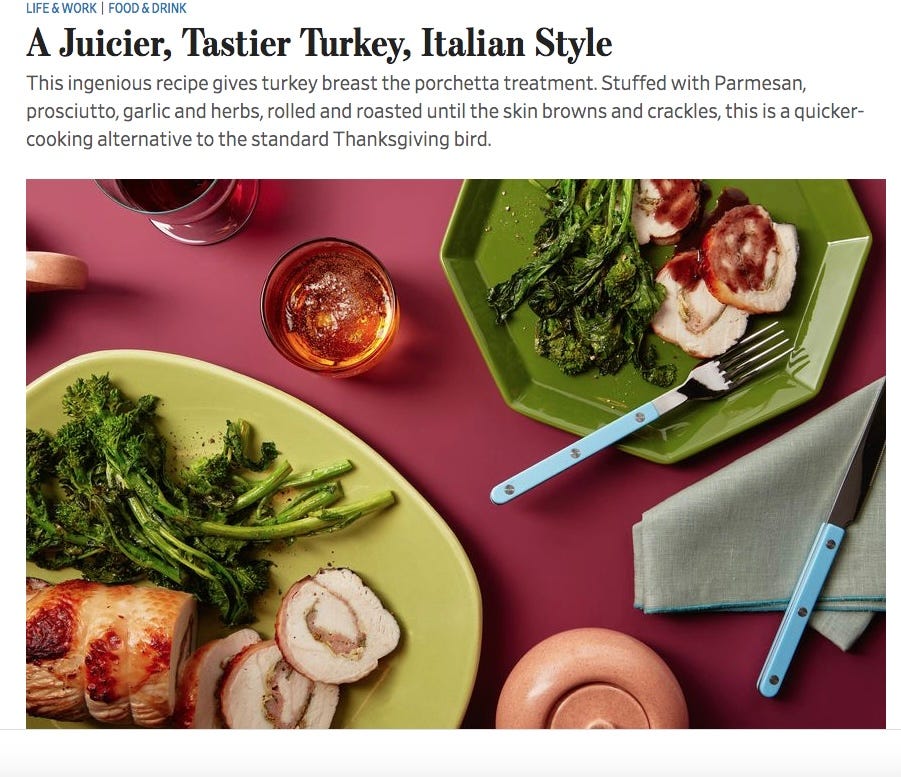
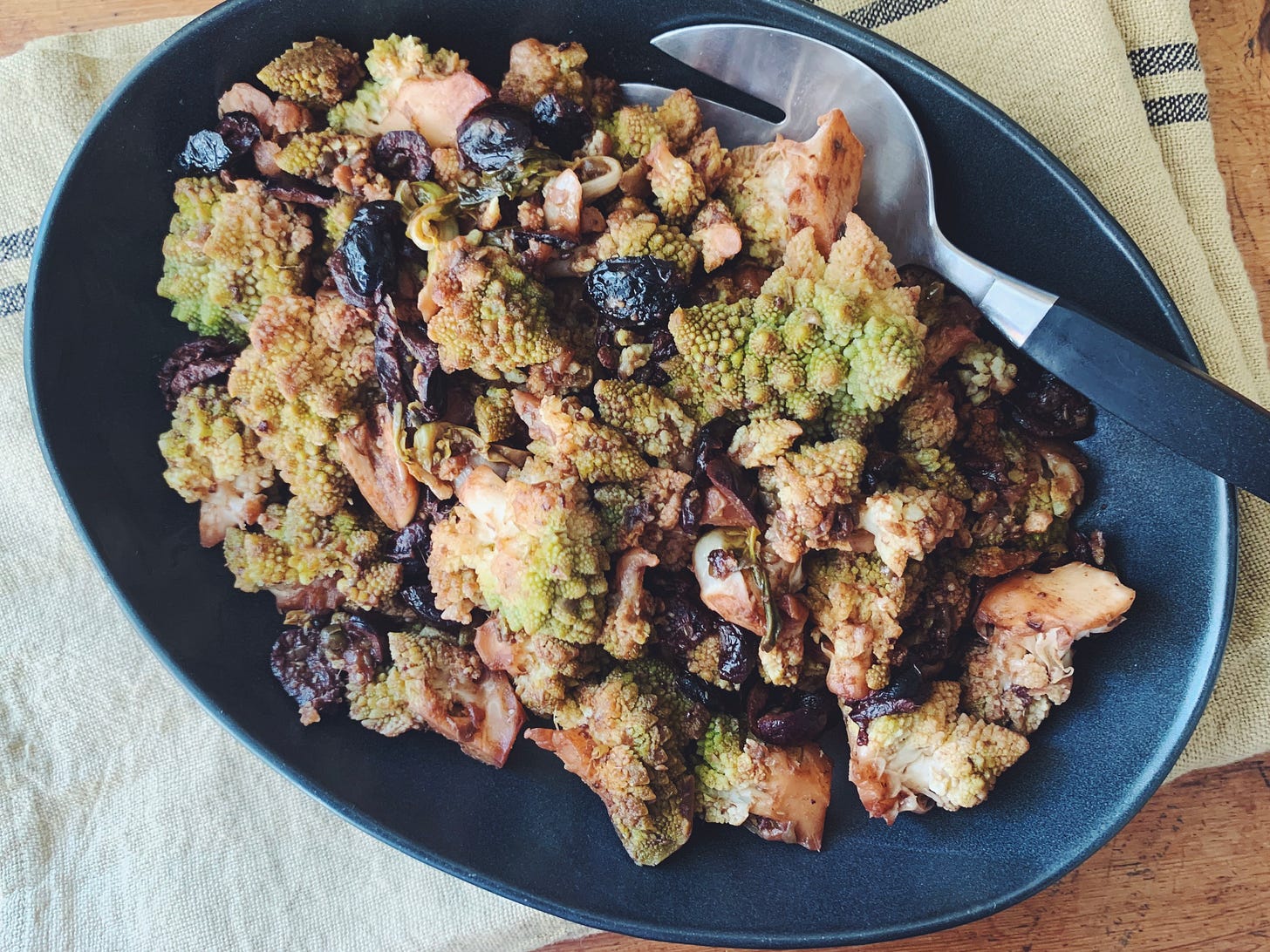
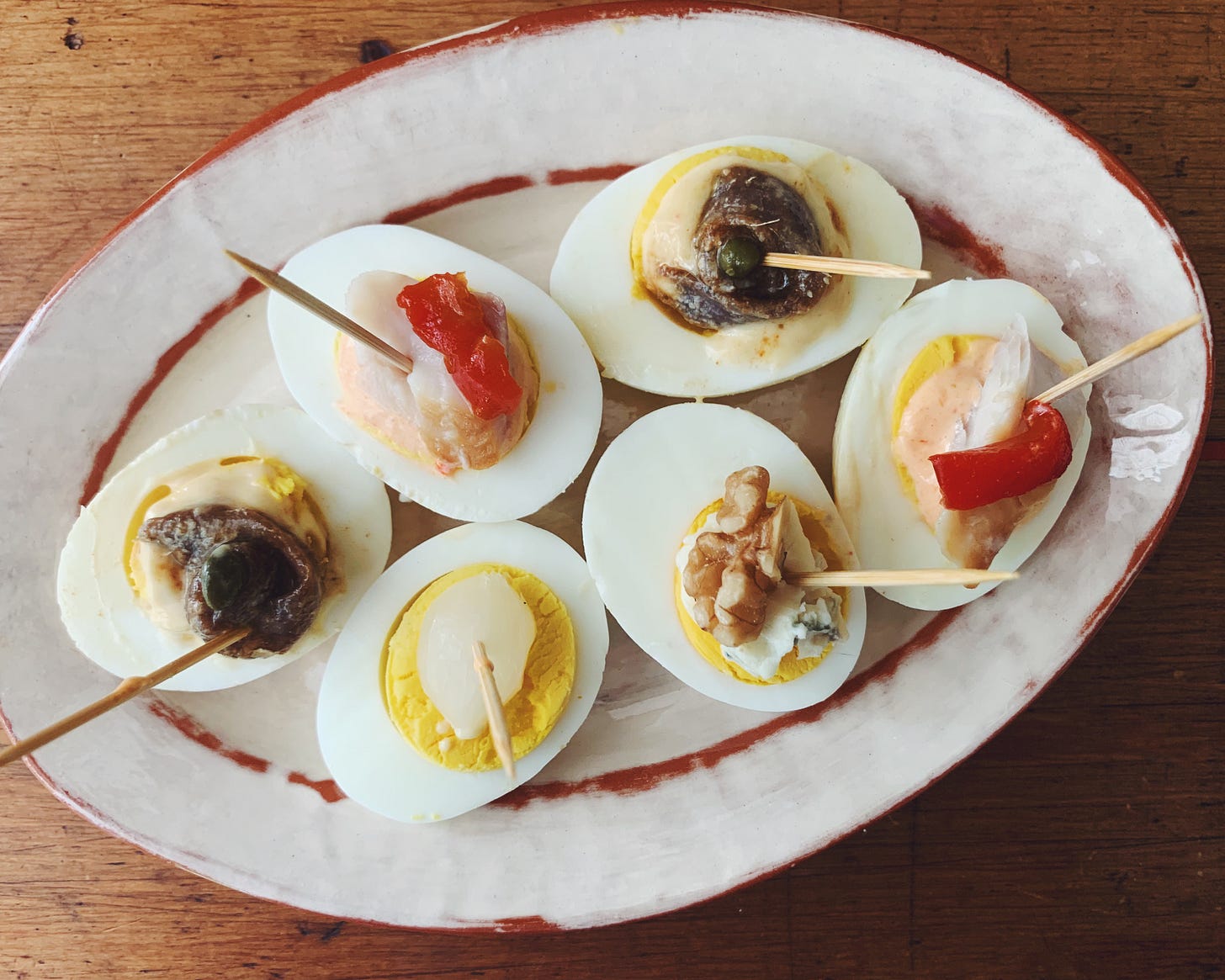
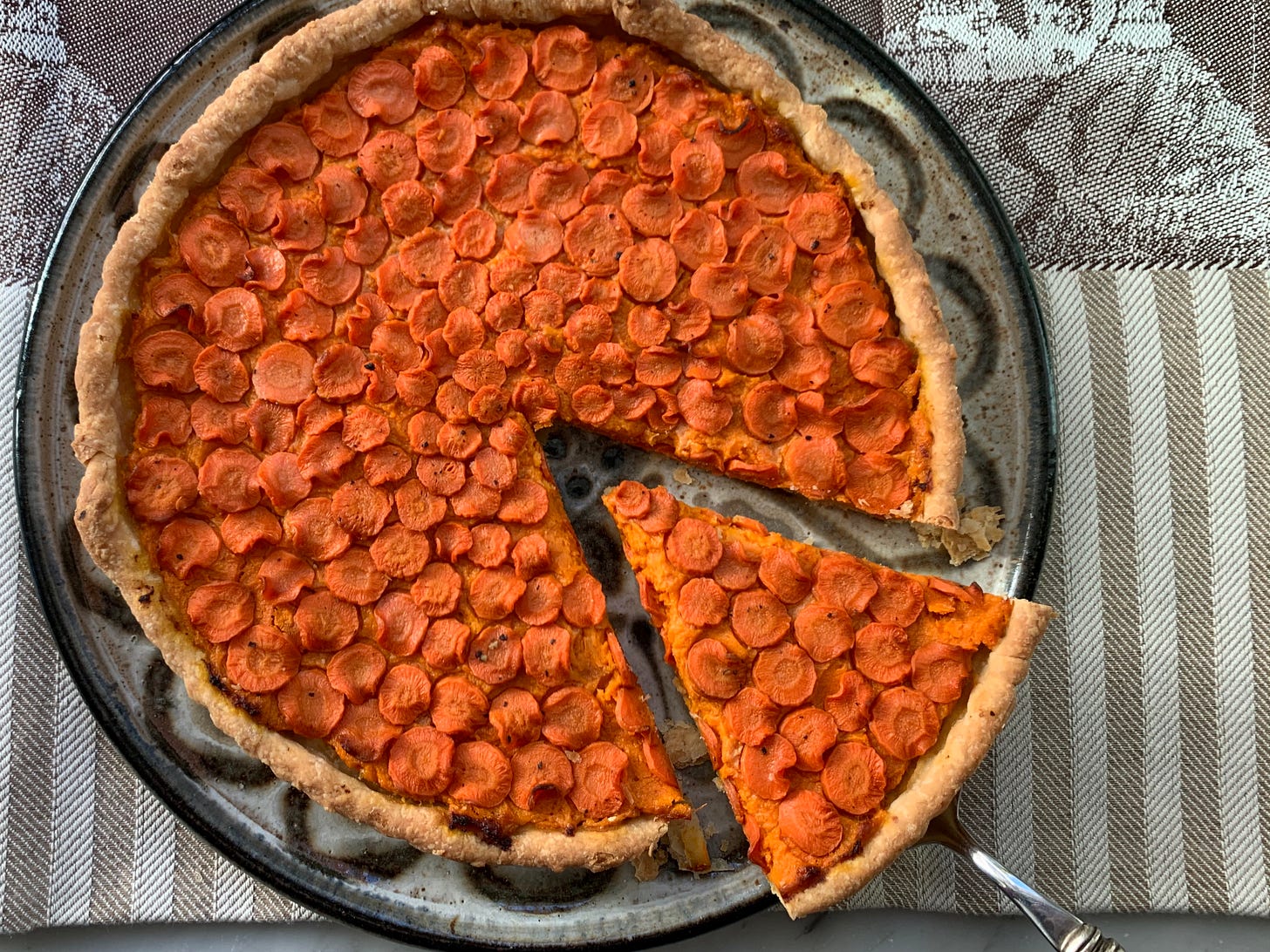
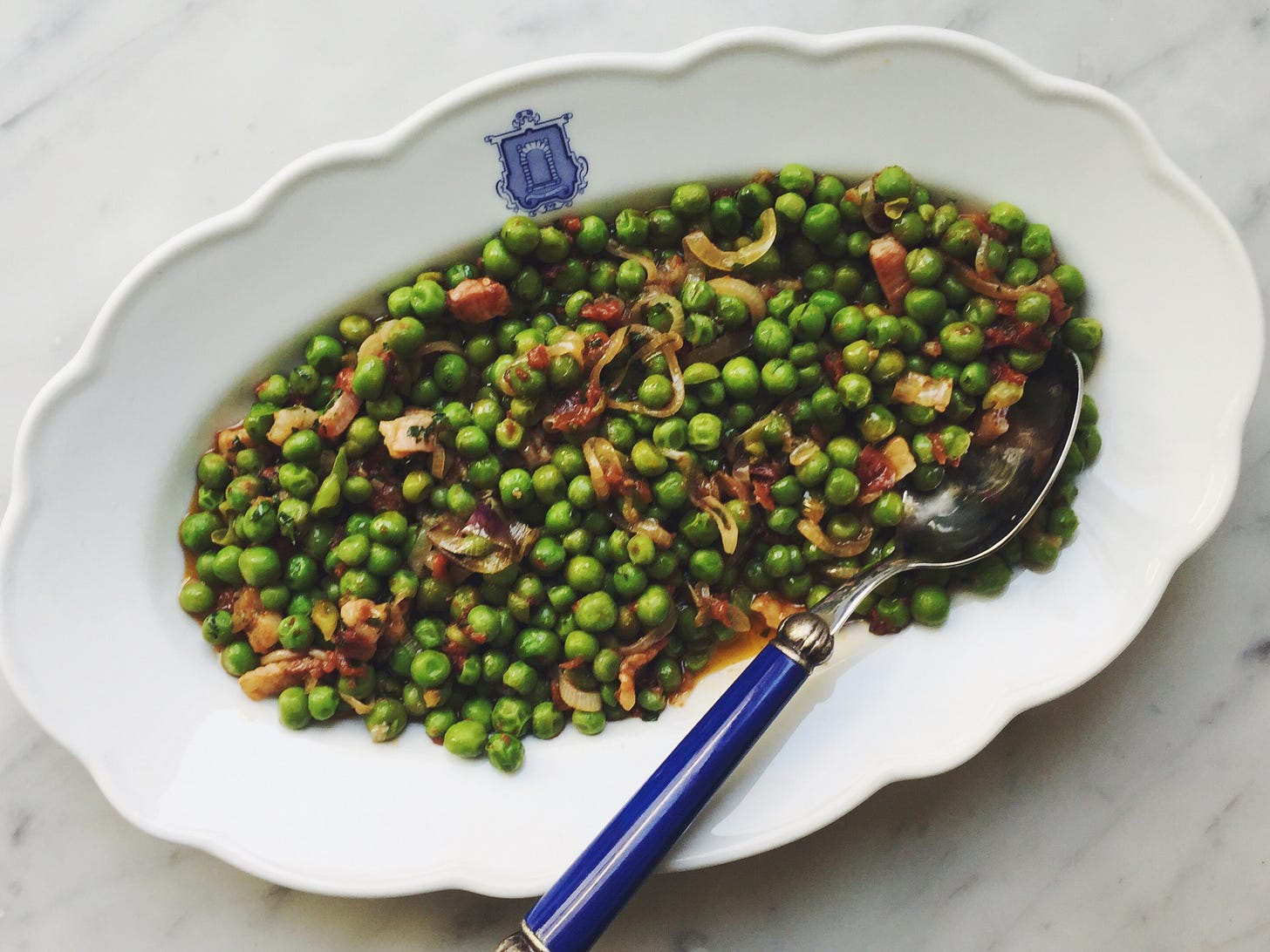
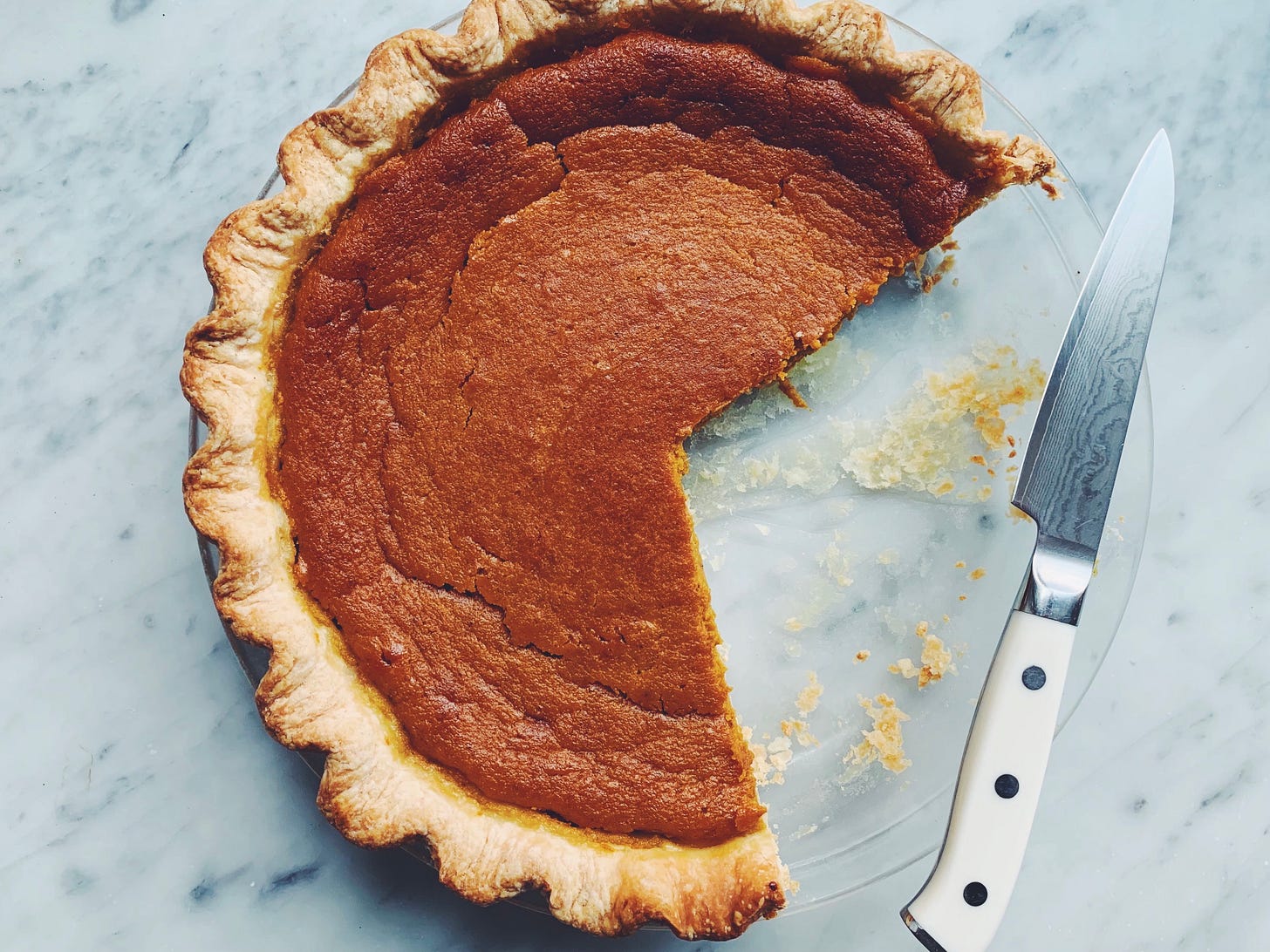
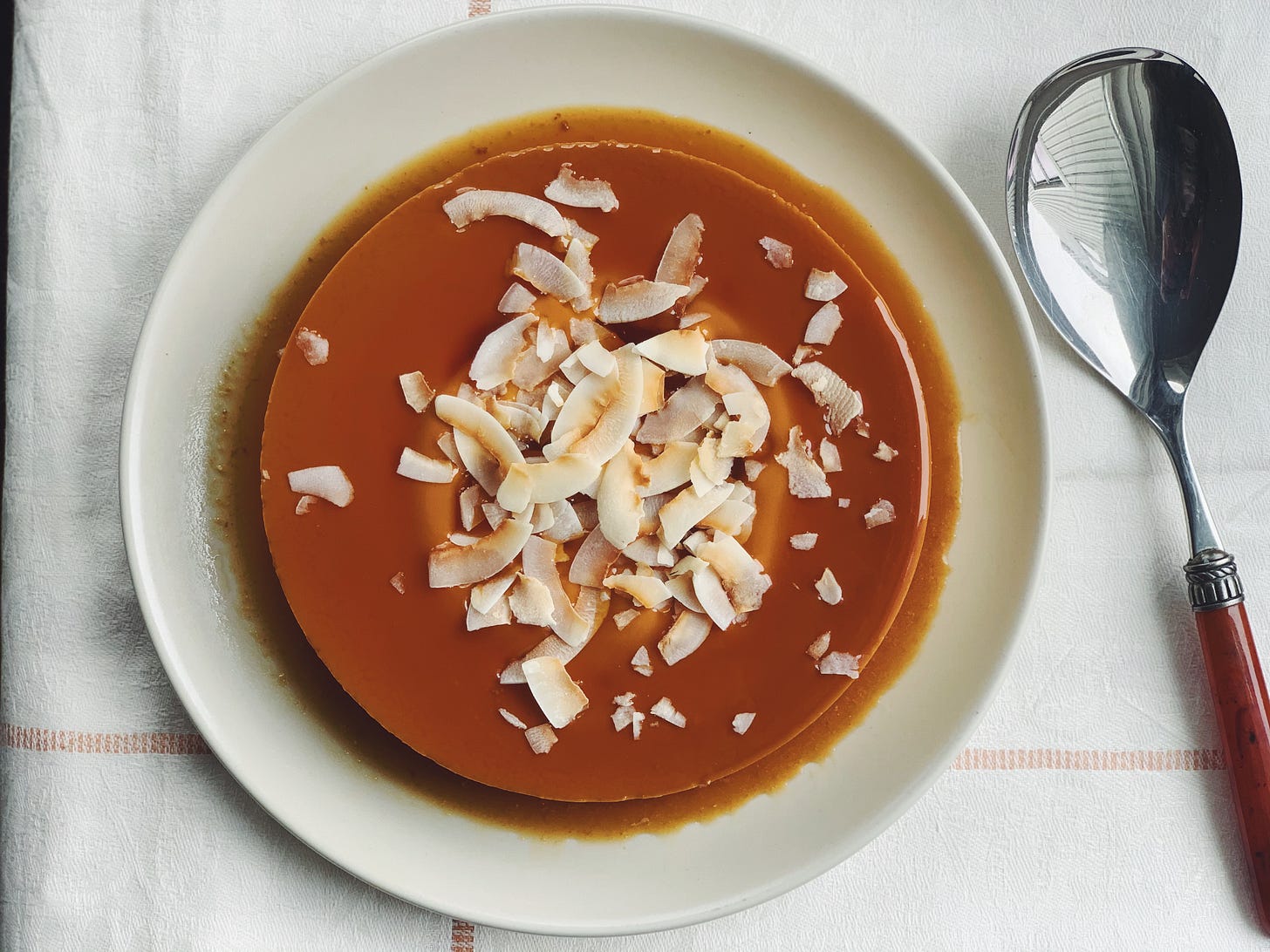
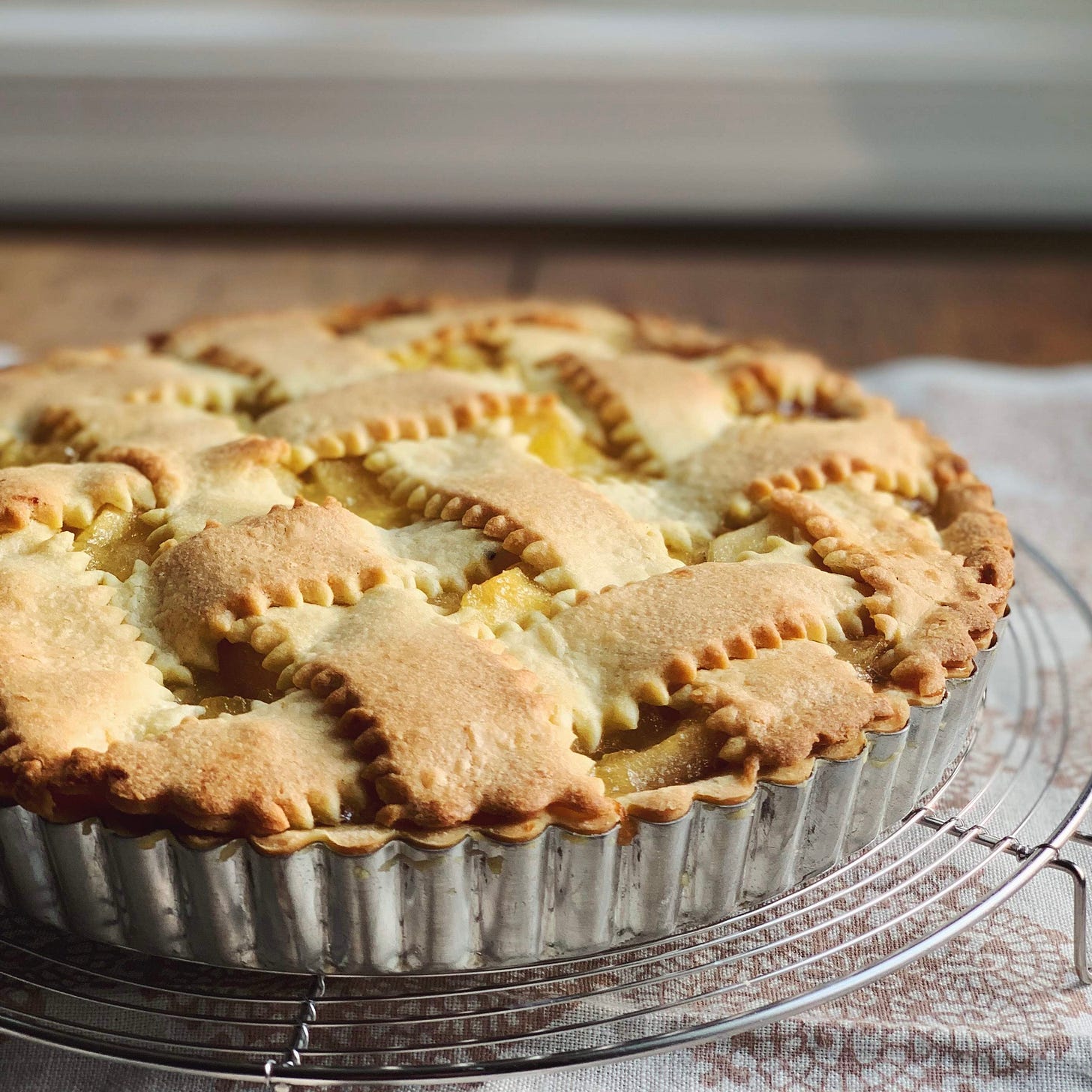
My Italian Nonni made chestnut stuffing too with pecorino. We also had agro dolce braised red cabbage with currants. I’m going to do both this year alongside my turkey thighs. Happy Thanksgiving, dear Domenica!
I'm on my own for Thanksgiving this year, and I'm going to try my hand at your turchetta. For at least four decades I hosted a traditional Thanksgiving dinner, sometimes stressful, but so important to me. Though I miss it, now I get to experiment, so thank you for sending so many recipes our way today (I also have a big, beautiful cauliflower in the fridge...). Also, I LOVE chestnuts, so probably will make our family's no-recipe-just-make-it dressing that we find delicious, even cold in the days following. Chestnuts make it special. Happy Thanksgiving!